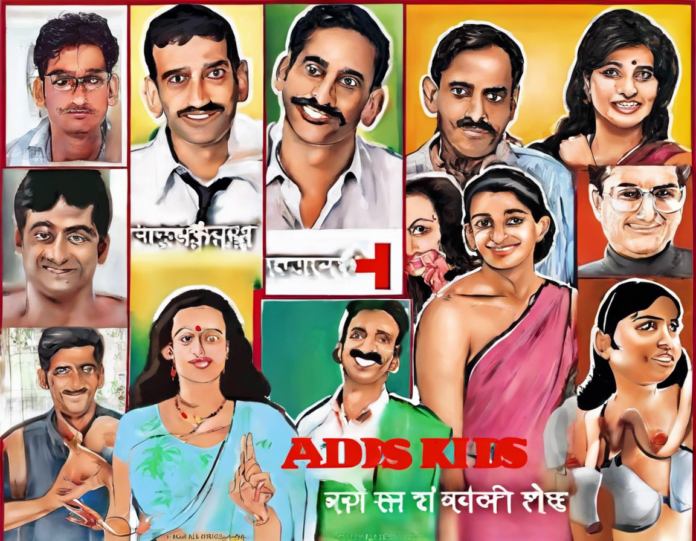Introduction
Acquired Immunodeficiency Syndrome, commonly known as AIDS, is a serious and often deadly condition caused by the Human Immunodeficiency Virus (HIV). HIV weakens the immune system, making individuals more vulnerable to various infections and other health complications. One of the keys to preventing the spread of AIDS is understanding how it spreads and taking necessary precautions to protect oneself and others. In this comprehensive guide, we will explore the causes of AIDS and ways to prevent its transmission.
How AIDS Spreads
HIV is present in certain body fluids of infected individuals, and the virus can be transmitted through various means. Understanding how HIV spreads is crucial in preventing new infections. The primary modes of HIV transmission include:
1. Unprotected Sexual Contact: One of the most common ways HIV is spread is through unprotected sexual intercourse with an infected person. This includes vaginal, anal, and oral sex. The virus can enter the body through the mucous membranes in the mouth, vagina, penis, and rectum.
2. Sharing Needles: HIV can be transmitted through sharing needles or syringes with an infected person when injecting drugs, steroids, or medications. This is a significant risk factor, especially among people who inject drugs.
3. From Mother to Child: HIV can be transmitted from an infected mother to her child during pregnancy, childbirth, or breastfeeding. However, the risk of transmission can be significantly reduced with proper medical interventions.
4. Blood Transfusions: While rare in countries with strict screening protocols, HIV can be transmitted through blood transfusions or organ transplants from infected donors.
5. Occupational Exposure: Healthcare workers and first responders are at risk of HIV transmission through needle-stick injuries or contact with infected blood or body fluids in the workplace.
6. From Infected Blood Products: Before rigorous screening measures were implemented, HIV transmission occurred through contaminated blood products. This is now uncommon in most developed countries.
Preventing HIV Transmission
1. Practicing Safe Sex:
– Always use condoms correctly and consistently during sexual intercourse.
– Limit your number of sexual partners, and know their HIV status.
– Consider pre-exposure prophylaxis (PrEP) if you are at a high risk of HIV infection.
2. Avoiding Needle Sharing:
– If you inject drugs, use sterile needles and syringes every time.
– Utilize needle exchange programs to access sterile injecting equipment.
3. Mother-to-Child Transmission Prevention:
– Pregnant women with HIV should receive antiretroviral therapy to prevent transmission to their babies.
– Infant feeding guidelines should be followed to minimize the risk of transmission through breast milk.
4. Blood Safety Measures:
– Ensure blood and blood products come from safe sources with proper screening procedures.
– Health institutions should follow strict infection control protocols to prevent occupational exposure.
5. HIV Testing and Counseling:
– Regular HIV testing is essential to know your status and seek appropriate treatment if positive.
– Counseling services are crucial in promoting awareness, reducing stigma, and encouraging safe behaviors.
Frequently Asked Questions (FAQs)
Q1: Can I get HIV from kissing?
A1: HIV is not spread through casual contact like kissing. The virus is not present in saliva unless there are open sores or cuts in the mouth.
Q2: Can I get HIV from a mosquito bite?
A2: No, HIV is not transmitted through mosquito bites. The virus cannot survive in mosquitoes and is not spread through insect bites.
Q3: Is it safe to share food or drinks with someone who has HIV?
A3: Yes, HIV is not spread through sharing food, drinks, utensils, or other items. The virus is fragile and does not survive long outside the body.
Q4: Can I get HIV from toilet seats or swimming pools?
A4: No, HIV is not transmitted through sharing toilets, swimming pools, or other common facilities. The virus does not survive well outside the body.
Q5: Does HIV always lead to AIDS?
A5: HIV infection does not always progress to AIDS. With proper medical care, treatment, and adherence to medications, people living with HIV can lead healthy and fulfilling lives without developing AIDS.
Q6: What are the early symptoms of HIV infection?
A6: Early symptoms of HIV can mimic flu-like symptoms, such as fever, fatigue, swollen glands, sore throat, rash, and muscle aches. It is essential to get tested if you suspect exposure to the virus.
Q7: How effective is PrEP in preventing HIV transmission?
A7: Pre-exposure prophylaxis (PrEP) is highly effective in preventing HIV transmission when taken as prescribed. It significantly reduces the risk of acquiring HIV through sexual contact or injection drug use.
Q8: Are there HIV vaccines available?
A8: While there is no vaccine for HIV currently available, ongoing research is being conducted to develop an effective vaccine to prevent HIV infection.
Q9: How can I support someone living with HIV?
A9: Supporting someone living with HIV involves showing understanding, compassion, and empathy. Encourage them to seek medical care, adhere to treatment plans, and provide emotional support without judgment.
Q10: Is there a cure for HIV/AIDS?
A10: While there is no cure for HIV/AIDS yet, advancements in antiretroviral therapy have transformed the condition into a manageable chronic illness for many individuals. Research into a cure continues worldwide.
Conclusion
Knowing how HIV spreads and taking proactive steps to prevent transmission is key to controlling the spread of AIDS. By practicing safe behaviors, getting tested regularly, and seeking appropriate medical care, individuals can protect themselves and others from HIV infection. Education, awareness, and access to healthcare services play a crucial role in combating the HIV/AIDS epidemic and improving the quality of life for those affected by the virus.









